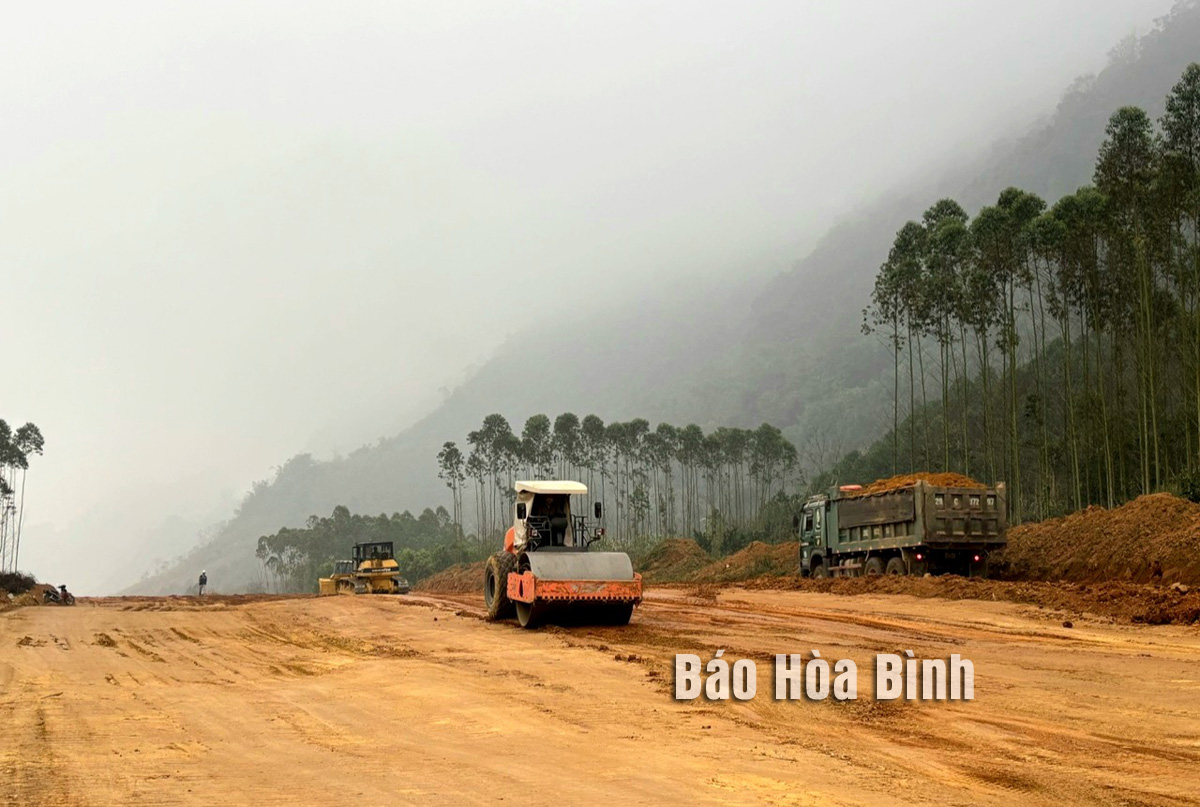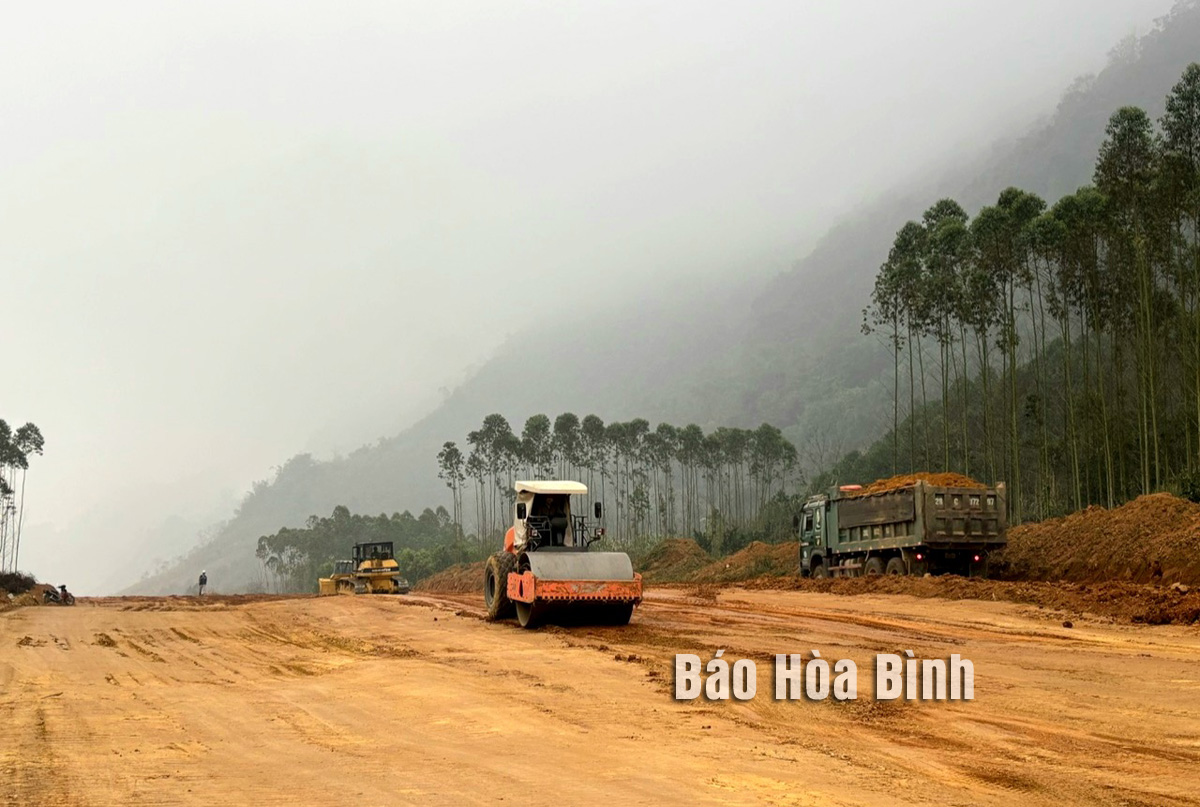
The northern mountainous province of Hoa Binh is making strong progress thanks to major public investment projects carried out in recent years.
In the 2021-2025 period, Hoa Binh was allocated a record of 33.3
trillion VND (about 1.27 billion USD) in public investment capital, including
12.4 trillion VND from the provincial budget and 20.9 trillion VND from the
central government. This figure is 170% higher than that in the previous period
from 2016 to 2020), showing strong central support and local commitment.
As soon as the site is handed over, the construction of the Hoa Binh
- Moc Chau expressway through Cao Son commune, Da Bac district, is accelerated.
To get the funds, the province actively mobilised various sources including
land-use revenues, local budget overspending, concentrated basic construction
investment capital and non-state capital. These resources are being funneled
into major infrastructure projects with high spillover effects, especially in
the fields of transport, environmental protection, and climate change response.
Mindset changed
Instead of spreading funds thinly across many small projects, Hoa Binh has
shifted toward concentrated and strategic investments. This change is aligned
with the Party’s orientation: prioritising key national and local projects with
strong regional impacts and potential to drive socio-economic growth,
particularly in disadvantaged areas.
The Resolution of the 17th provincial Party Congress identified infrastructure
development one of four strategic breakthroughs in this term. To realise this strategic breakthrough, in Project No. 02-DA/TU on completing
socio-economic infrastructure in the 2021 – 2025 period, the provincial Party
Committee identified the focus as prioritising the development of road traffic
infrastructure and technical infrastructure to protect the environment and
respond to climate change. This orientation is consistent with the key
directions in allocating resources for medium-term investment that is to
allocate capital to important and urgent projects, and projects that can create
a high connectivity, inter-regional impacts, and boost socio-economic
development.
Nguyen Van Danh, Director of the provincial Department of Finance, said that
public investment capital are allocated to projects and works properly,
following lawful schemes. Priority is given to large-scale and high-impact
projects, especially roads, industrial zones, and projects that enhance
inter-regional connectivity.
Public investment has already fueled several large-scale projects. Notably, the
Hoa Binh – Moc Chau Expressway, running through Hoa Binh, has a total
investment of nearly 10 trillion VND, including 1.7 trillion VND from the
provincial budget. Another major project is the inter-regional road connecting
Hoa Binh with Hanoi and the Son La expressway, worth 4.12 trillion VND. Important roads have been built or repaired. Currently, the province has over
11,170 km of roads, an increase of around 420 km compared to 2020.
Alongside roads, irrigation and dike projects have also been upgraded to ensure
agricultural productivity and residents' safety. The national power grid now
covers 100% of communes and towns in the province.
Industrial zones have been improved to increase occupancy rates and attract
more businesses. At the same time, the province is investing in public services
to improve quality of life. Schools, hospitals, and social welfare facilities
have been built or renovated with public funds.
While many achievements have been made, Hoa Binh is still facing challenges in
turning public investment into long-term development momentum. Success requires
not only financial resources but also strong political will, institutional
reforms, and practical actions.
Nevertheless, the past five years have demonstrated the province’s
determination. With the active involvement of administrations at all levels,
Hoa Binh is on track to achieve sustainable growth and overcome its difficulties.
Hoa Binh province has made notable progress in public administration reform and digital government development, with the satisfaction index among citizens and businesses reaching over 84%, according to recent government evaluations.
Thanks to great efforts by local authorities in recent times, the governance and public administration performance of Mai Chau district has been significantly improved.
In the afternoon of June 6, the Party Committee, the People's Council, the People's Committee and the Fatherland Front of Lac Son district solemnly held a meeting to celebrate the 139th anniversary of the district's founding (1886–2025) and the 79th anniversary of the establishment of the district's Party Committee (1946–2025). There was the attendance of Mr. Bui Van Thang, the Vice Chairman of the Provincial People's Council; Mr. Quach Tat Liem, the Vice Chairman of the Provincial People's Committee; Ms. Dang Bich Ngoc, the Deputy Head of the National Assembly Delegation of the province; as well as the former leaders of the province and district through various periods, who are the natives of the district.
Implementing the Politburo’s Resolution No. 57-NQ/TW on breakthroughs in science – technology, innovation, and digital transformation is a golden opportunity for the northern mountainous province of Hoa Binh to renew growth model, improve competitive edge and shorten digital gap.
Resolution 57-NQ/TW, issued by the Politburo on December 22, 2024, identifies sci-tech, innovation, and digital transformation as strategic breakthroughs to build a developed and prosperous nation. In Hoa Binh province, this spirit is not just a slogan, it’s being put into action through concrete initiatives that form a "new development triangle”: digital citizenship, digital economy, and digital administration.
Hoa Binh province is undergoing a dynamic transformation amid Vietnam’s national digital transition. Building on Poliburo’s Resolution No. 57-NQ/TW on breakthroughs in science, technology, innovation, and national digital transformation, the province has rolled out a wide range of practical action plans. A standout initiative is the "Digital Literacy for All” movement, an effort to ensure that no one is left behind in the digital era.



